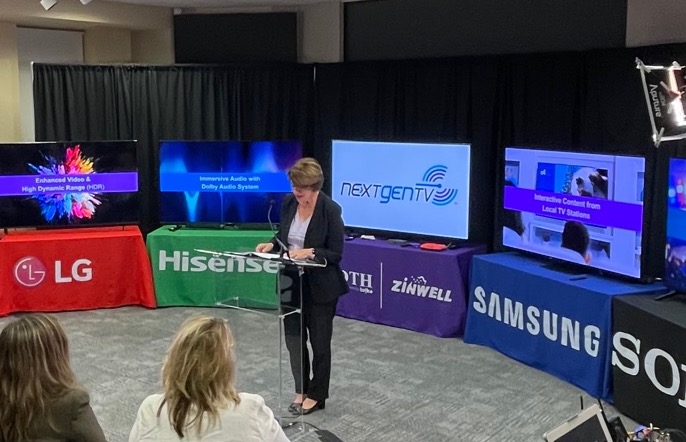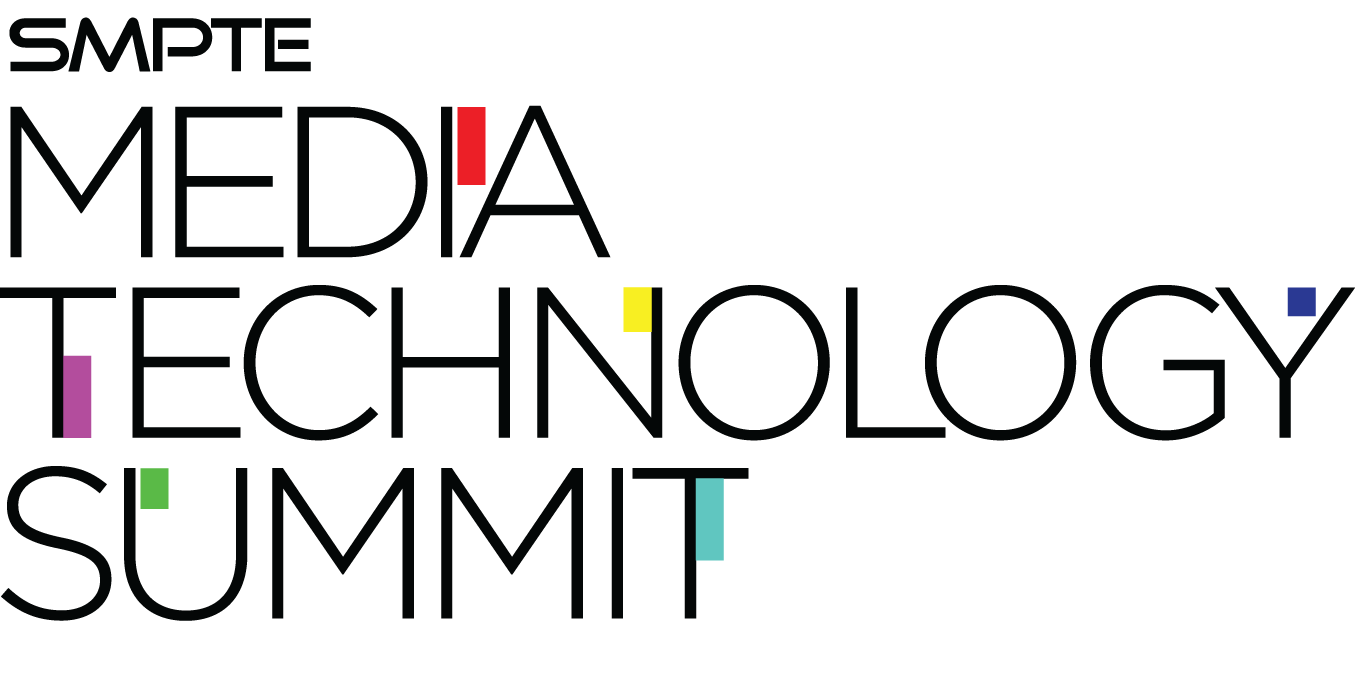NextGen TV: Despite Challenges ATSC 3.0 Continues To Advance
NextGen TV markets and devices grew in ‘23, but there were some worrisome developments

In the world of technical stock analysis, there’s a common phrase that reminds traders to grasp the big picture, take to heart a stock’s long-term direction and ultimately –it is hoped— win on more trades.
That phrase, “the trend is your friend,” seems to fit an evaluation of ATSC 3.0 in 2023. Overall, if 3.0 were a stock, the trend continues on an upward trajectory. However, like all stocks, its rise has not been straight up. While 2023 may be remembered for some new highs, that’s not to say there haven’t been a few notable pullbacks.
As Madeleine Noland, president of the Advanced Television System Committee, put it in a September bulletin to the standards bodies’ membership: “Every technology transition has its challenges. That’s normal.”
Her comment was directed at easing concerns over the announcement that LG Electronics, a major contributor to the development of the standard and one of the original three TV manufacturers to offer televisions with 3.0 receivers, had informed the FCC that it would discontinue 3.0 receivers in its 2024 televisions.
The move, prompted by a court loss in a patent dispute over a key technology leveraged in the 3.0 physical layer, left many wondering whether Sony, Samsung and Hisense, which joined the ranks of NextGen TV manufacturers last year, as well as any company offering a device with a 3.0 receiver might face similar suits and take similar steps.
“The impact of this patent situation is likely very limited…,” said Noland, pointing to comments from an unidentified “prominent electronics industry market analyst.”
Upward Trend
While the question over further patent cases has yet to be answered, the overall trend of 3.0 continued its upward path this year. As of late 2023, NextGen TV is available in more than 70 markets, reaching 70% of U.S. homes.
Get the TV Tech Newsletter
The professional video industry's #1 source for news, trends and product and tech information. Sign up below.
The most notable addition in 2023 was New York City, the nation’s largest TV market with more than 7.7 million TV households. WLIW, owned by public broadcaster WNET Group, lit up the NextGen TV lighthouse in mid-October. WCBS, WMBQ-CD, WNBC, WNET and WNJU joined WLIW on its stick. Another 3.0 transmitter is expected to light up before the end of the year, said Noland.
An important aspect of the New York 3.0 launch is its crowded airwaves, which makes the market one of the hardest around the country from which to launch NextGen TV service.
Other notable market additions to the 3.0 roster in 2023 include Philadelphia, Boston, San Francisco, Miami-Fort Lauderdale Fla., Minneapolis-St. Paul, Minn., Cincinnati, Hartford-New Haven, Conn., Reno, Nev., and South Bend, Ind. In all, 14 new markets came online this year, accounting for nearly 24 million more NextGen TV households.
Both Miami-Fort Lauderdale and Minneapolis-St. Paul are now on-air with two 3.0 sticks.
The nation’s transition to 3.0 appeared to get a shot in the arm during the 2023 NAB Show when Federal Communications Commission Chairwoman Jessica Rosenworcel announced the Future of Television initiative.
“Today, we are announcing a public-private initiative, led by the National Association of Broadcasters, to help us work through outstanding challenges faced by industry and consumers,” said Rosenworcel during her NAB Show speech.
Before the show, various broadcasters noted that the slow pace of the voluntary transition to NextGen TV was a threat to the future of television broadcasting.
In The Home
While how the patent issue will impact CE makers other than LG is unclear, there was also NextGen TV progress among consumers and manufacturers. Pearl TV in July predicted that by the end of the year more than 10 million certified NextGen TV television sets will be in the homes of Americans.
Beyond the purchase of new televisions, consumers had a few new options to receive NextGen TV, including set top boxes (STBs) from Atlanta Direct To Home (ATDH) powered by Tolka software and Zinwell—both of which bear the NextGen TV certification logo.
ZapperBox also tackled 3.0 DRM support with its ZapperBox M1 NextGen TV DVR, which it released in mid-September.
A confusing report this summer stating Silicondust had added 3.0 DRM support to its HDHomeRun NextGen TV FLEX 4K Tuner by virtue of the addition of FreeCast was in error, leaving the first NextGen TV STB on the market without support for DRM-protected 3.0 channels.
Outside the United States, ATSC 3.0 garnered some important wins in 2023. Brazil, which is in the process of defining its TV 3.0 next-generation television standard, narrowed down the field of possible physical layers in November to two, including ATSC 3.0. After field testing, the nation’s Fórum Sistema Brasileiro TV Digital Terrestre is expected to choose the winner next year. It previously had chosen several ATSC 3.0 components for TV 3.0, including ROUTE/DASH transport, MPEG-H Audio, IMSC1 captioning and Advanced Emergency Messaging. Trinidad and Tobago also began its ATSC 3.0 transition this year.
In India, which is considering mandating ATSC 3.0 in smartphones, there is a tug of war between the government, which sees the standard as a way to cut network congestion by offloading video to broadcast, and smartphone vendors and the nation’s association representing the interests of cellular and electronics interests, which are resisting adding 3.0 reception due to the expense. Despite the resistance, the nation’s telecommunication standards development body (TSDSI) and mobile broadband standards group 3GPP have adopted ATSC 3.0 as their own, said Noland.
In South Korea, where ATSC 3.0 now reaches more than 80% of the population, Sinclair Broadcast Group is working with SK Telecom spinoff SK Square to enhance 3.0 services between the U.S. and South Korea and expand a broadcast backbone technology called Data Distribution as a Service (DDaaS) globally.
DDaaS, which Sinclair president and CEO Chris Ripley laid out during a press conference at the 2023 NAB Show, will take advantage of a cloud-based local broadcasting management and control platform and real-time 3.0-based datacasting technology to power data delivery business models. In October, Sinclair president of technology Del Parks said the broadcast group would “soon” have 30 of its NextGen TV stations connected to the DDaaS platform.
ARK Multicasting and Gaian Solutions this year also advanced 3.0-based datacasting. The pair announced their Nexus Connect joint venture that combines the former’s broadcast internet network and the latter’s Mobius intelligent platform.
3.0 Pullbacks
As Noland noted, ATSC 3.0 also faced some challenges. The year started off with a report in early January that Evoca TV, the 3.0-based hybrid MVPD serving tier two and three markets with a pay-TV alternative, had shut down. (The company actually closed Dec. 31, 2022, but reports surfaced Jan. 2, 2023.) Former Evoca CEO Todd Achilles pointed to a refusal of Disney, Fox, NBC and CBS to cut content deals with his company as the reason it closed.
One factor helping to push 3.0 across the regulatory finish line when the FCC authorized transmission of NextGen TV in November 2017 was the standard’s support for advanced emergency alerting. In the intervening period, the Advanced Warning and Response Network (AWARN) Alliance has worked to advance next-generation emergency messaging.
However, in 2023 despite continued support from Sinclair, Capitol Broadcasting Company and other broadcasters, the alliance lost Pearl TV, Fox Television and News-Press and Gazette as members, which alliance executive director John Lawson hopes to see reversed in the future.
One of the most worrisome pullbacks involves a much larger concern: a lack of NextGen TV awareness among the public. Researcher Dave Tice, a senior consultant to Hub Entertainment Research and principal of research consultancy TiceVision, has asked consumers about their awareness of NextGen TV for the past five years.
“This past year in April when we asked it, only about 20% of people had ever even heard the phrase, and 7% who knew the phrase could give any sort of description,” Tice said during a TVTech Summit panel in November on the NextGen TV rollout.
How does this finding jibe with Pearl TV’s estimate of 10 million certified NextGen TVs in the homes of Americans by year’s end, one might ask. In the view of Tice and others before him, NextGen TV is along for the ride with other consumer-facing technologies built into new sets.
Perhaps this lack of awareness is just another of the discomforts of a maturing technology and will fade as 3.0 market deployments and additional sticks in markets come online. As Noland headlined her September bulletin to members, developments in ATSC 3.0 “underscore both progress and growing pains.”
Phil Kurz is a contributing editor to TV Tech. He has written about TV and video technology for more than 30 years and served as editor of three leading industry magazines. He earned a Bachelor of Journalism and a Master’s Degree in Journalism from the University of Missouri-Columbia School of Journalism.

